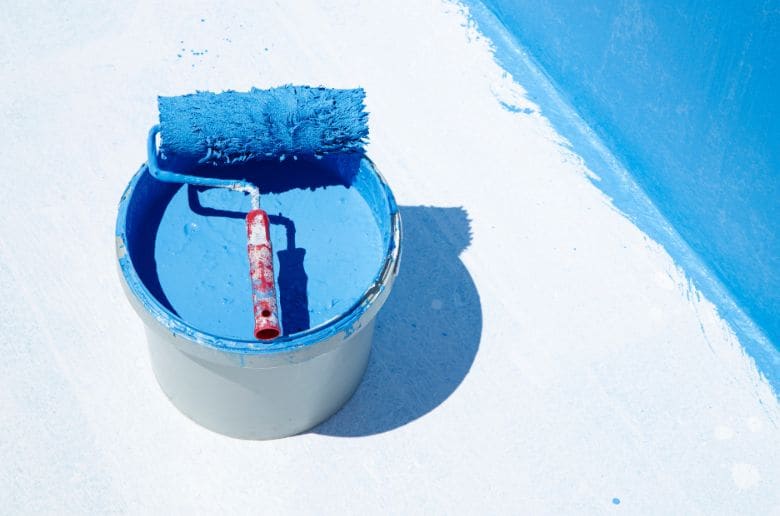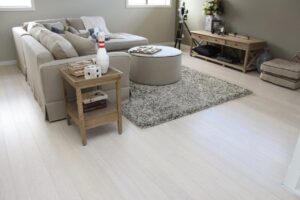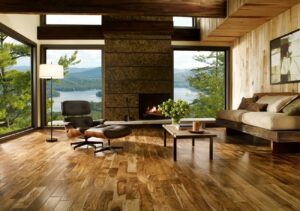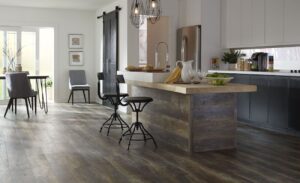Selecting between Zinsser Watertite vs Drylok for waterproofing projects is more than just a product choice; it’s about safeguarding the integrity of one’s home.
Persistent moisture issues can deteriorate walls and foundations, leading to costly repairs. Thus, the efficacy of waterproofing paints becomes paramount in home maintenance.
Both Zinsser Watertite and Drylok promise robust solutions, but their nuances dictate their suitability for different scenarios.
This comparison will provide a clear, objective look at their attributes, ensuring homeowners can make informed decisions for their specific needs.
Quick Comparison
| Feature | Zinsser Watertite | Drylok |
|---|---|---|
| Base | Acrylic/oil, latex option | Acrylic, oil/water options |
| Suitability | Uncoated walls, subfloors | Concrete, stucco, etc. |
| Finish | White | White + 8 tints |
| Pressure Resistance | 10-34 psi | Up to 15 psi |
| Application | Complex, no sprayer | Easier, sprayer-friendly |
| Longevity | 5-20 years | 7-15 years |
| Cost | Higher | Lower |
| Mold Resistance | With mildewcide | Mold-resistant |
| Odor | Less | Standard |
| Use Ease | Hardens if open | Sticky but simpler |
| Special Features | Efflorescence treatment | Radon protection |
| Use Area | Interior/exterior | Interior/exterior |
Breakdown of Key Features and Properties
Evaluating Zinsser Watertite and Drylok involves dissecting their core features and how they perform against moisture.
Types of Paint: Acrylic, Oil-based, and Latex Options
When considering Zinsser Watertite or Drylok, we find a range of options. Zinsser offers oil-based and latex formulas, while Drylok features latex and acrylic solutions.
Here’s a quick overview:
- Zinsser Watertite
- Latex: Quick-drying, low odor, and easy water clean-up.
- Oil-Based: Higher durability, longer drying time, better for severe conditions.
- Drylok
- Latex: Eco-friendly, breathable, and adheres well.
- Acrylic: Superior color retention, excellent for damp surfaces.
Choosing between them depends on the specific needs, such as the drying time, the surface condition, and environmental considerations.
Surface Compatibility and Ideal Use Cases
The ideal use cases for each paint type vary:
- Zinsser Watertite excels on masonry and concrete, perfect for basements and cellars where moisture seepage is a primary concern.
- Drylok, with its flexible acrylic option, is suited for both interior and exterior surfaces, adapting well to slight movements and temperature changes.
Comparison of Finish and Aesthetic Options
The finish of the paint can impact the visual appeal of a space:
- Zinsser Watertite offers a smooth, matte finish, hiding minor surface imperfections.
- Drylok presents a more granular texture, which may be preferable for outdoor applications.
It’s crucial to consider the desired aesthetic outcome when selecting a waterproofing paint.
Waterproofing Efficacy and Pressure Resistance
Waterproofing efficacy is paramount.
Both brands withstand hydrostatic pressure, but their resistance levels differ:
- Zinsser Watertite can resist up to 34 pounds of water pressure per square inch.
- Drylok is effective against 10 pounds of water pressure per square inch.
For areas subjected to heavy water pressure, Zinsser Watertite may have the edge.
Note: Always consider the specific conditions of the area to be treated, such as the level of moisture exposure and the type of substrate, before making a selection.
By dissecting these characteristics, we provide clarity on which product may be more suitable for particular waterproofing needs, aiding homeowners in their decision-making process.
Key Differences Between Zinsser Watertite and Drylok
Dissecting the nuances between Zinsser Watertite and Drylok reveals their distinct advantages.
Analyzing Costs and Value for Money
A critical factor for many is the cost. A comparative analysis of the price per gallon presents Drylok as generally more cost-efficient than Zinsser Watertite. However, the value extends beyond the initial purchase price.
Zinsser’s higher cost is justified by its industrial-grade formulation, offering robust waterproofing for severe conditions, which may translate to long-term savings by reducing the need for frequent reapplications.
Longevity and Durability: What to Expect
Durability is a key differentiator. Zinsser Watertite guarantees a waterproofing seal for up to 15 years, while Drylok offers a 10-year warranty for its products.
The longevity of Zinsser’s solution underlines its robustness in extreme conditions, while Drylok’s ease of application and maintenance makes it a strong contender for those seeking balance.
Mold and Mildew Resistance Capabilities
Both brands promise resistance to mold and mildew, essential for health and safety:
- Zinsser Watertite contains a biocide that repels mold and mildew growth for up to 5 years.
- Drylok incorporates a fungicidal additive, but with no specified duration for effectiveness.
The choice may hinge on the environment’s susceptibility to these growths and the desired frequency of maintenance.
Special Features: Efflorescence and Radon Protection
Special features often tip the scales in product selection. Zinsser Watertite uniquely offers radon mitigation, a feature not claimed by Drylok.
On the other hand, Drylok addresses the issue of efflorescence—a crystal-like deposit that can emerge on masonry surfaces—by converting it into an insoluble compound.
Important Note: Radon protection is a significant consideration in areas known for high radon levels, as this colorless, odorless gas can be hazardous to health.
Through this comparison, we shed light on which product might best meet specific waterproofing needs, whether for durability, cost-effectiveness, health considerations, or special features.
Which is Better? Zinsser Watertite or Drylok
Choosing between Zinsser Watertite vs Drylok depends on multiple factors, each crucial to the decision-making process.
Situational Suitability: Matching the Product to Your Needs
The superiority of one product over another is often dictated by specific requirements:
- Zinsser Watertite is best suited for extreme conditions and areas prone to heavy water intrusion.
- Drylok is recommended for more common residential uses, where severe dampness is less of an issue.
Application and Ease of Use: What DIYers Should Know
For those who prefer to handle home maintenance themselves:
- Drylok is known for its straightforward application process, ideal for DIY enthusiasts.
- Zinsser Watertite requires more preparation but offers a more durable solution in the long run.
A detailed comparison would involve the consistency of the paint, required number of coats, and drying time.
Health and Safety: VOC Compliance and Odor
When it comes to health and safety, both products are low in volatile organic compounds (VOCs), making them safer for indoor use and less detrimental to air quality.
However, sensitivity to odor is a personal matter, and both products do emit some degree of smell during application and drying.
Final Verdict: Balancing Benefits Against Costs
The decision hinges on a careful balance of benefits against costs. While Zinsser Watertite may come at a higher price point, its long-term durability and special features like radon resistance could provide more value in the long run.
Conversely, Drylok’s ease of application and lower initial cost make it an attractive option for those with immediate, less severe waterproofing needs.
Ultimately, the “better” choice is subjective and is best made by aligning the product’s attributes with one’s specific waterproofing requirements, health considerations, and budget constraints.
Conclusion
The discourse between Zinsser Watertite vs Drylok has highlighted vital points for effective waterproofing. It’s clear that each brand has its strengths and suitability for different situations.
Making the right choice requires balancing the severity of the waterproofing needs against product characteristics and personal preferences.
We recommend assessing the specific conditions of your basement or waterproofing project to guide your decision. Committing to the appropriate product ensures longevity and efficacy, fostering wise maintenance decisions for your home.





